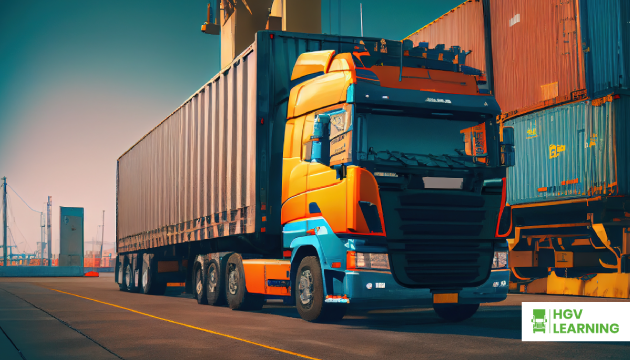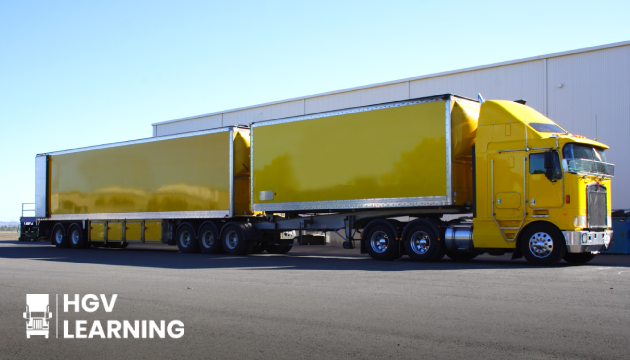Related Articles

28/10/2025
Preventing HGV Overloading: Legal Limits and On-the-Road Consequences

21/10/2025

If you’re already a qualified HGV driver and are considering a shift to passenger transport, moving into a PCV driver role could be the perfect next step. Whether you’re looking for a new challenge, more public interaction, or a role that fits your lifestyle better, transitioning from an HGV to PCV licence is a practical and rewarding choice. In this guide, we explain what’s involved, the similarities and differences between the two roles, and how HGV Learning can help you make the switch confidently.
HGV drivers are licensed to carry goods, while PCV drivers are licensed to carry passengers. The key difference lies in the type of vehicle and the responsibilities associated with the role. While both require a high level of skill and professionalism, PCV drivers often work with the public and are responsible for ensuring the comfort and safety of their passengers throughout the journey.
If you’re used to driving large vehicles, you already have a head start when it comes to manoeuvring, spatial awareness, and working under pressure. However, PCV roles introduce an extra focus on customer service and daily interaction with people.
There are many reasons an HGV driver may consider transitioning to a PCV driver role. You might prefer working fixed routes with regular passengers, enjoy engaging with the public, or be looking for a role that provides more predictable hours. In some cases, PCV jobs may be based closer to home or offer more localised routes compared to long-distance HGV jobs.
If you’re at a stage in your career where you want a change of pace without leaving the driving profession, PCV driving offers a natural progression with transferable skills. Switching from an HGV to PCV licence is also a great way to broaden your employment opportunities. Many employers value drivers with dual qualifications, as it offers them greater flexibility in staffing different vehicle types.
Some PCV driving jobs also come with additional benefits such as local routes, public sector employment opportunities, or unionised working conditions. These aspects can appeal to HGV drivers looking for a new balance between work and personal life.
PCV roles may also involve a more structured routine. For example, driving a local bus service typically follows the same routes and timetables each day, which many drivers find preferable to unpredictable long-haul goods deliveries.
To drive a bus, coach, or minibus professionally, you will need a PCV licence. There are two main types:
If you already hold a full car licence and an HGV licence, the transition is usually straightforward. However, you will still need to complete the relevant medical, theory, and practical tests required for a PCV licence.
To better understand the process, visit our article on getting a PCV licence which outlines each step in detail.
Although you already have experience as a professional driver, you’ll need to complete some additional training to qualify for a PCV licence. This includes:
At HGV Learning, we can guide you through this process and connect you with DVSA-approved training providers who offer high-quality PCV driver training. We help ensure you’re fully prepared at every stage, from revision materials to booking your practical test.
As an experienced HGV driver, you already possess many of the skills needed to become a competent PCV driver. These include:
Where you’ll gain new experience is in passenger communication, customer service, and managing different types of passenger needs. These soft skills are just as important as your technical knowledge when driving professionally in the public transport sector.
Learning how to remain calm under pressure, manage onboard announcements, and respond to customer queries will become valuable parts of your daily routine as a PCV driver. These elements of the role often bring a new sense of satisfaction to those coming from an HGV background.
You’ll also develop new habits such as performing passenger safety checks, reporting minor incidents professionally, and managing schedules with a focus on punctuality and passenger comfort. These additions to your responsibilities make the role more dynamic and people-focused.
In time, many drivers discover that the role provides more variety than expected. From city routes to school runs and special events, your workday could change often depending on the service you are assigned to.
We specialise in helping drivers upskill and diversify their qualifications. Whether you’re moving from goods to passenger transport or pursuing both, we make the transition simple.
Our team supports you at every stage, from checking your licence eligibility to booking medicals and theory tests. We also connect you with local training providers offering flexible, high-quality instruction tailored to your needs and schedule.
We also recommend our article on finding HGV training near you if you’re looking for trusted providers offering both HGV and PCV support.
If you want to practise for the theory section, check out our guide on where to find a practise HGV theory test to help you prepare with confidence.
We also provide support after you qualify. Whether you’re seeking job leads, additional training, or help understanding CPC renewal, our team is always ready to assist. You’ll never feel like you’re doing this alone.
Transitioning from HGV to PCV driving is a smart move for those who want variety, greater job satisfaction, or a change in pace. With your existing experience, you’re already well-equipped to succeed in the passenger transport industry. From understanding the PCV licence process to developing new people-focused skills, your path to becoming a PCV driver is closer than you might think.
We help you make that change smoothly and with confidence. Contact our team today to begin your journey towards becoming a qualified PCV driver.

28/10/2025

21/10/2025
Complete the form below and we’ll contact you asap.

